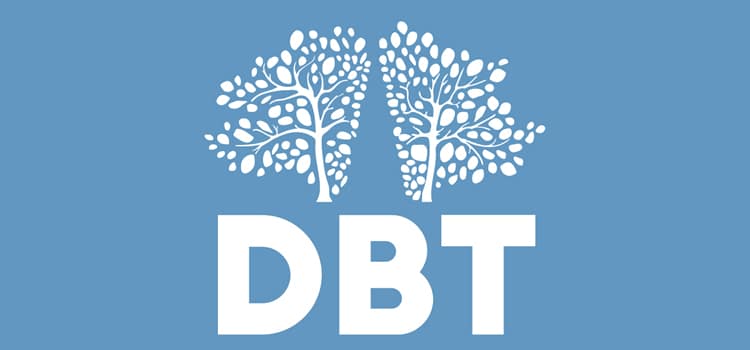Dear readers this column, for the immense happiness of the one who is writing it, aims to present Dialectical Behavior Therapy (DBT)[1], its constituent elements (from the bases philosophical to therapeutic strategies), the points of intersection with other approaches to behavior analysis, the applications of DBT, as well as providing a global overview of the research and the main researchers within this beautiful treatment approach, which will be presented soon further down in this text. Before reading any further if you are looking for the best dbt therapist in London then consult City Psychological Services.
In this way, a bimonthly meeting will be created between DBT and the esteemed readers of “Behave”. Therefore, over time, a validating and effective communication channel will be built here for the discussion of DBT and the, still incipient, entry of DBT in Brazil. It should be noted that, for the author of this column, it is a great pleasure and an inestimable privilege to be able to talk to each one of you, who, even though you may still be just starting to get to know DBT, already have a passion in common with all the therapists who work with you. practice DBT, which is behavior analysis.
What is expected in this space is a spirit of democratic discussions, always seeking to reach a level of theoretical and technical excellence. So welcome to this column, and please feel free to let us discuss DBT and its place within behavior analysis in depth. And, to begin the construction of this space, it will begin with a brief presentation of the history of DBT.
DBT was developed by PhD. Marsha Linehan in the 1980s in the US. However, the development of DBT was started in the 1970s from the training that Linehan obtained in Behavioral Therapy and Cognitive Behavioral Therapy (CBT) with his PhD professors and supervisors. Gerald Davidson and PhD. Marvin Goldfried (Linehan, 2010a).
Precisely, from this training, Linehan started a whole work with CBT to treat women who are chronically suicidal and with non-lethal self-mutilation (AMNL). However, a very interesting aspect of this phase of Linehan’s career was that during the supervision she carried out with her colleagues, she realized that the vast majority of her patients met the diagnostic criteria for Borderline Personality Disorder (BPD). In other words, this is precisely how Linehan’s massive interest in patients with BPD developed (Dimeff & Koerner, 2007).
Therefore, during the execution of this CBT application project with this population, Linehan noticed three neuralgic problems in the use of this model with these patients. The first is that CBT has a specific emphasis on change. This characteristic was perceived by patients as an invalidation of their private experiences. The second point refers to the fact that patients, unintentionally, ended up reinforcing their therapists when they used ineffective treatment strategies, as well as punishing them when they used effective psychotherapeutic interventions. Finally, the third problematic element perceived by Linehan was that these patients had many problems and with high severity, which ended up making the proper application of CBT impossible. I.e,
From Linehan’s deep reflection, together with his team, an assessment was developed of which CBT procedures were effective and which were not. Based on this discussion, the need to dialectically balance the emphasis of CBT on change strategies was seen, and thus, acceptance strategies were introduced (thus constituting the most important dialectical tension of DBT, which is acceptance X change ). However, it was also observed that even with the introduction of this new group of psychotherapeutic procedures, there was still a risk of therapists and patients being “positioned” dichotomously in one of the two poles of the fundamental dialectic of DBT. Therefore, a third group of treatment strategies was developed with the function of guaranteeing the continuous movement between acceptance and change,
In addition, it was noticed that the treatment conducted only by the individual therapist ended up not being able to help the patient to reduce their problem behaviors, and at the same time, work on building and generalizing new skills. To deal with this challenge, DBT was eventually developed as a modular approach. That is, in DBT there are several treatment modules that are as follows: individual therapy, the skills training group (in which the four fundamental skills of DBT are worked on – Mindfulness, interpersonal effectiveness, emotional regulation and tolerance for discomfort). ), case supervision consultation, telephone consultation with the patient, the use or not of auxiliary treatments. That way,
Thus, with the development of these new therapeutic procedures, Linehan and his team began the development of DBT itself. To do so, it was necessary to actually investigate the evidence of this new treatment approach. Thus, in 1991 Linehan and his team published the first randomized clinical trial of DBT with the title: Cognitive Behavioral Treatment of Chronically Parasuicidal Borderline Patients. This article evidenced for the first time the effectiveness of DBT for women with chronically suicidal BPD and with AMNL. Furthermore, this publication ended up giving DBT the status of being the first evidence-based psychotherapy for these patients (Linehan et al., 1991; Linehan, 2015).
So after the development of this first clinical trial, Linehan ended up developing two major DBT manuals in 1993. One of these manuals focused on DBT as a whole, from the philosophical bases to the therapeutic strategies themselves. And the other one directed to the therapists of the skill groups, containing all the instructions and orientations for the assembly, execution and the skills developed (mindfulness, interpersonal effectiveness, emotional regulation and tolerance to discomfort) (Linehan, 2010a, Linehan, 2010b).
From all this path, there was the development of DBT, which nowadays has many studies, in several research groups around the world, demonstrating the effectiveness of this treatment model. Thus, DBT ended up expanding its spectrum of action not only for BPD, but also for Post-Traumatic Stress Disorder, Substance-Related Disorders, Major Depressive Disorder, Bipolar Mood Disorder and Eating Disorders (Linehan, 2015).
Finally, dear readers, it is important to note that this column was intended to briefly present the history of DBT. However, in the next chapters, each component element of this treatment approach will be deepened. That is, it can be expected that in the next columns, written here, themes that were briefly presented in this text will be deepened. Therefore, the next texts will enter into the universe of acceptance, validation, emotional regulation, problem-solving strategies, postures and dialectical strategies, reciprocal and irreventent communications… In short, a full dive into DBT. Dear readers, feel invited to interact, get to know, be enchanted and, why not, fall in love with DBT…. After all… This is just a short presentation… See you next time!!










Leave a Review